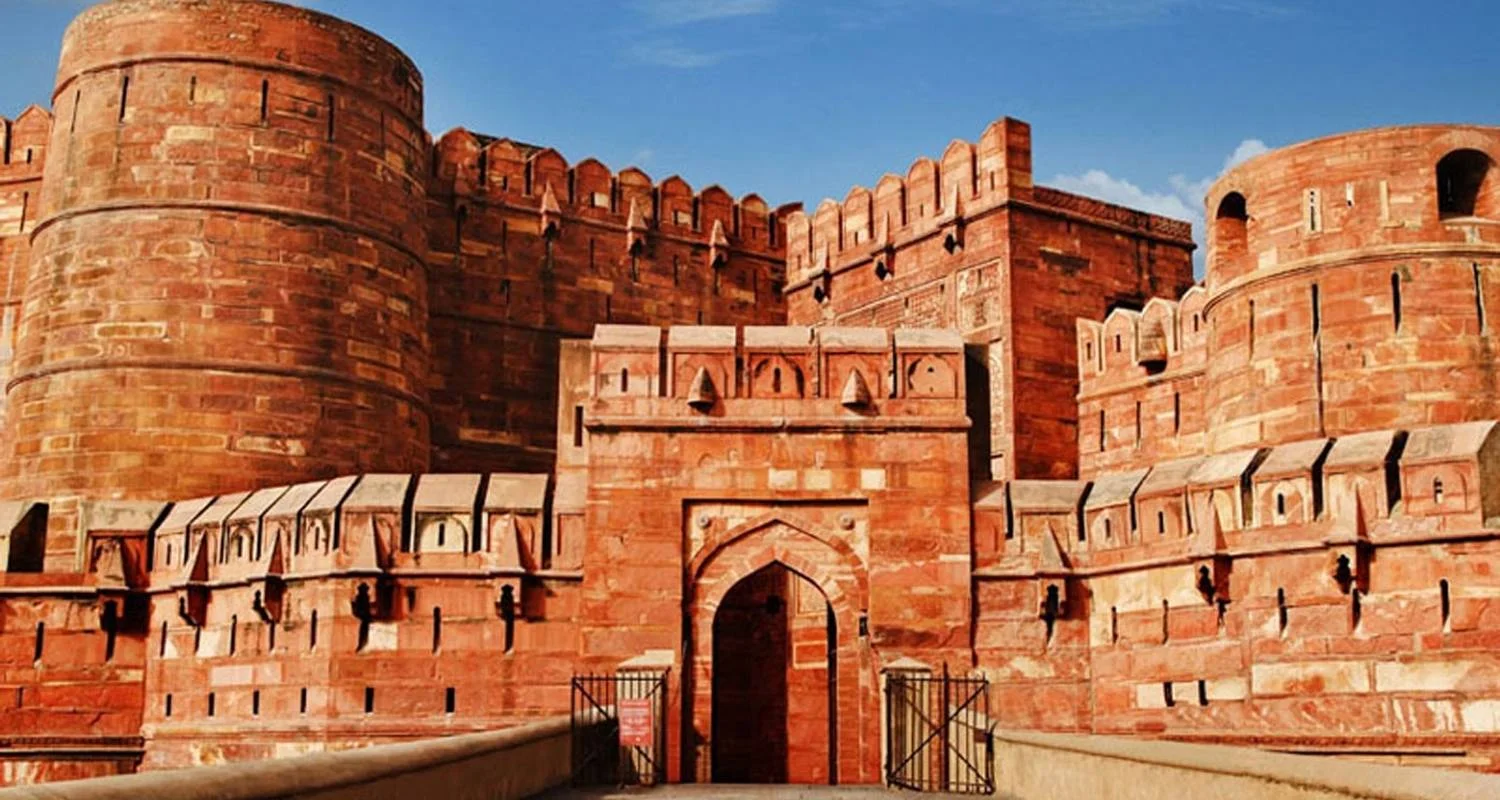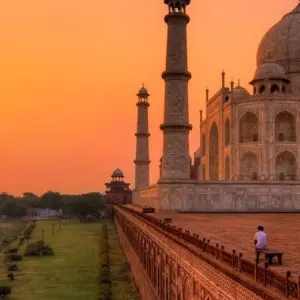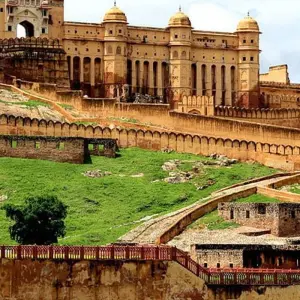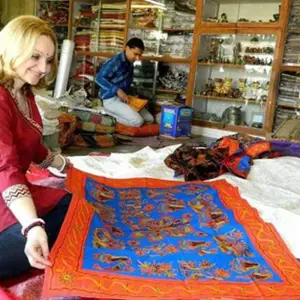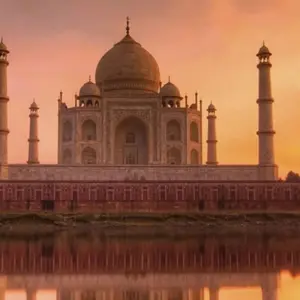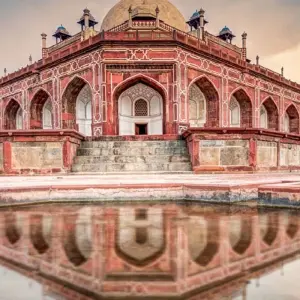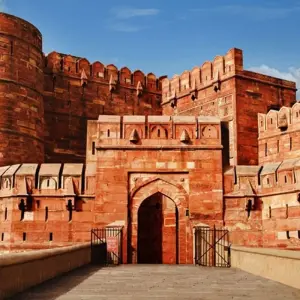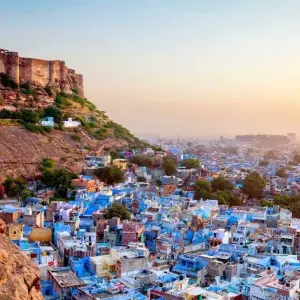Terms and Conditions updated on December 14, 2023
DIVYAN HOLIDAYS herein after referred to as the Company accepts bookings subject to the terms and conditions outlined herein, which agreement shall be the whole agreement between the parties.
THE BOOKING
This booking and subsequent contract shall be deemed to have been concluded in Agra, India and shall be interpreted according to the laws of the Republic of India.
The parties consent to the jurisdiction of the Magistrates Court of Agra. The Company at its instance will have the discretion to sue in the Civil Court Agra if it deems is appropriate.
All prices and services are correct at the time of printing. All prices, services and departures are subject to change without prior notice.
The Company reserves the right to alter the published price of any tour due to increasing tariffs, costs and entry fees or fluctuation of exchange rates, such amounts shall be determined at the sole discretion of the company.
The Company reserves the right to decline any booking without outlining its reasons therefore.
No booking shall be considered confirmed until a written confirmation slip has been sent to the agent/client and the full amount due paid and all cheques honored.
DEPOSIT & PAYMENT
- A non-refundable 30% deposit is required to secure a booking. This amount forms part of the payment for the trip and shall be offset to the total amount charged to the client/agent.
- If the full amount is not paid by thirty (30) days prior to departure, the Company reserves the right to treat the booking as cancelled and the deposit shall be forfeited.
- Passengers booking within thirty (30) days of tour departure are required to pay the full amount immediately to secure the seat.
CANCELLATIONS
- In the event of cancellation of tour / travel services due to any avoidable / unavoidable reason/s we must be notified of the same in writing. Cancellation charges will be effective from the date we receive advice in writing, and cancellation charges would be as follows:
- Between 30 days to 60 days or more prior to arrival: 10% of the tour / service cost
- Between 16 days to 29 days prior to arrival: 50% of the tour / service cost
- Upto 15 days prior to arrival OR No Show: No Refund
Note: Written cancellation will accept on all working days, except Sunday, Any cancellation sent on Sunday’s will be considered on next working day (Monday).
Every year on the Christmas and New Year period from 20 December to 5 Jan the payment is non-refundable.
Any passenger joining a tour after the departure date, or not at all, or leaving before the completion of the tour for any reason whatsoever, is not entitled to any refunds whatsoever from the Company, or entitled to claim any costs for any added expenses.
The Company reserves the right to cancel any tour at its sole and absolute discretion, without prior notification in instances where this is unavoidable. However, in this instance the Company agrees to refund all monies already paid by the client. This shall be the Company’s sole responsibility to the client and no claim for any damages, howsoever arising, shall accrue against the company.
PASSPORTS, VISAS AND OTHER TRAVEL PAPERS
* It is the client’s sole responsibility to ensure that passports, visas, health certificates, proof of vaccinations and any other required documentation are all in order for the countries to be visited. Passports must have 3-4 blank pages available.
* The Company cannot be held liable for any consequences, damages or claims if the client prior to commencement of the tour does not correctly attend to the client’s documentation and related matters.
INSURANCE
Comprehensive travel and cancellation insurance is mandatory on all tours. It is the client’s responsibility to ensure that they have this insurance in place and the required paperwork to prove such before embarking on the tour. Travel insurance must include comprehensive medical insurance including provision for air evacuation.
Any resulting consequence of not having this paperwork is the sole responsibility of the client.
BAGGAGE
All baggage and personal effects are at all times the client’s responsibility and the Company does not accept any liability for any loss or damage of any personal effects, howsoever arising.
The Company retains the right to refuse excess baggage.
RISK
The client accepts that all tours involve an element of personal risk. Neither the Company nor any of its agents shall be held liable in any way for any injury, loss of life or damage to property, howsoever caused and the client hereby indemnifies and holds the company, its agent, assigns and servants harmless from any such claim.
The client accepts full responsibility for all risks involved.
HEALTH
The client accepts that to participate in the tour requires a measure of physical fitness and health and it is the client’s obligation to ensure that they are medically fit to embark on the tour.
We do however require a medical certificate or doctor’s letter in respect of all clients over the age 65, confirming that they are medically fit to undertake the tour.
AUTHORITY ON TOUR
The decisions of the Company’s guide/driver on tour shall at all times be final and binding.
The client must at all times comply with the laws, customs and foreign exchange regulations of the country visited.
Should the client be in any contravention of the above or the client is a nuisance to the group the driver/guide may order the client to leave the tour without any claim to a refund. The client shall be obliged to make their way home at their own expense.
Photos and marketing
You consent to us using images of you taken during the trip for advertising and promotional purposes in any medium we choose. You grant us a perpetual, royalty-free, worldwide, irrevocable licence to use such images for publicity and promotional purposes.
Optional activities
Optional activities not included in the trip price do not form part of the trip or this contract. You accept that any assistance given by your group leader or local representative in arranging optional activities does not render us liable for them in any way. The contract for the provision of that activity will be between you and activity provider.
FORCE MAJEURE
Unforeseen circumstances including but not limited to war, mechanical breakdowns, weather, riots and other unforeseen reasons beyond the control of the Company may cause delays or alterations to the tour. The Company shall not be held liable in any way for any of these possible occurrences or any consequences, which may arise as a result of these.
TRAVEL DOCUMENTS
On booking, the client is issued with our tour dossier and pre-departure information documents. It is the responsibility of the client to read and understand these documents before travelling.
Terms and Conditions updated on December 14, 2023
____________________________________________________________
Cancellation Policy
If you cancel at least 40 day(s) in advance of the scheduled departure, there is no cancellation fee. If you cancel between 30 and 20 day(s) in advance of the scheduled departure, there is a 50 percent cancellation fee. If you cancel within 5 day(s) of the scheduled departure, there is a 100 percent cancellation fee.

